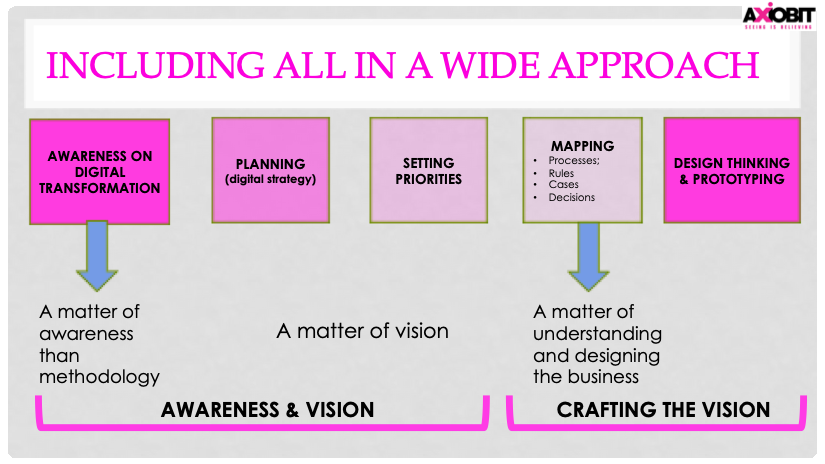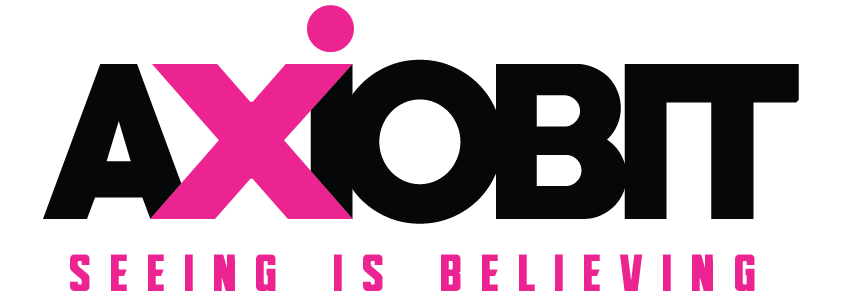“We choose to go to the moon. We choose to go to the moon, we choose to go to the moon in this decade and do the other things, not because they are easy, but because they are hard, because that goal will serve to organize and measure the best of our energies and skills, because that challenge is one that we are willing to accept, one we are unwilling to postpone, and one which we intend to win, and the others, too.”
John F. Kennedy, the 12th of September 1962
This article discusses the concept of culture of innovation, which argues that the business model is the most important component for success. During the last 10 years the business model is mostly designed by the digital strategy. The best proof of successful digital transformations is the significant leap in the company’s performance and market position, compared to competitors. But such a remarkable leap is almost never possible without innovation, therefore, innovation should be an essential part of the digital transformation effort.

Since the digital transformation concept arose (about 10 years ago), CEOs’ motivational speeches have been brimming with the same words and messages, such as disruption, innovation, disruptive innovation, out-of-the-box thinking and digital transformation. Innovation is the most relevant component of the digital transformation dynamics. A Capgemini survey shows that 85% of CEOs consider as being in a digital transformation process of growth; however, only 5% really knows what digital transformation is. Moreover, innovation is an exceptional concept, without a clear implementation methodology. In a time when digital effort produces 70% of failures, because the organization, its processes and culture are not ready for the change, building a culture of innovation deserves more attention.
The exclusive orientation of the management’s willingness towards building a culture of innovation and corresponding corporate governance has not worked. Several facts prove this reality, as the results have been extremely modest, despite the management’s will and strategic effort. In 2018, the known world spending effort on digital innovation was $1.5 trillion, out of which, more than $900 billion were officially wasted.
The statistics are frightening: more than 70% of IT projects continue to fail and 80% of people working in software implementation project of medium complexity is burned out. As a matter of fact, the blunt reality is that overall, 75% of the digital transformation initiatives fail.
The typical consulting services offered by the big consulting companies did not prevent that. This happened mainly because the focus towards realistic, actually “executable” solutions is almost inexistent still, in their so-called traditional methods and deliverables.
It has become clear that digital transformation and innovation are not only about technology and that directing every effort to improve the governance framework does not ensure success. Obviously, the governance is extremely important but at Axiobit, we have learned that methodology and discipline are equally decisive. As a matter of fact, methodology and discipline make the difference between success and failure.
ABOUT DISCIPLINE
In an article published in HBR, Gary Pisano, notes:
“The reason, I believe, is that innovative cultures are misunderstood. The easy-to-like behaviors that get so much attention are only one side of the coin. They must be counterbalanced by some tougher and frankly less fun behaviors. A tolerance for failure requires intolerance for incompetence. A willingness to experiment requires rigorous discipline. Psychological safety requires comfort with brutal candor. Collaboration must be balanced with individual accountability. And flatness requires strong leadership. Innovative cultures are paradoxical. Unless the tensions created by this paradox are carefully managed, attempts to create an innovative culture will fail.”
Leading the journey of building and sustaining an innovative culture is particularly difficult, for three reasons, Pisano generally claims:
- Innovative cultures require a combination of contradictory behaviors; therefore, they risk creating confusion. A major project fails. Should we focus on the positive and celebrate? Should the leader of that program be held accountable? The answer to these questions depends on the circumstances. Was the failure preventable? Without clarity around these nuances, people can easily get confused, and even cynical, about the actions of the leadership.
- While certain behaviors required for innovative cultures are relatively easy to embrace, others will be less palatable for some in the organization. Those who think of innovation as a free-for-all will see discipline as an unnecessary constraint on their creativity; those who take comfort in the anonymity of consensus won’t welcome a shift toward personal accountability. Some people will adapt readily to the new rules, but others will not thrive.
- Innovative cultures are systems of interdependent behaviors; they cannot be implemented in a framework. Think about how the behaviors complement and reinforce one another. Highly competent people will be more comfortable with decision-making and accountability. Their “failures” are likely to yield learning rather than waste. Disciplined experimentation will cost less and yield more useful information. Accountability makes it much easier to be flat in the context that flat organizations create a rapid flow of information, which leads to faster, smarter and less costly decision-making.
Beyond the usual things that leaders can do to drive cultural change (articulate and communicate values, model target behaviors, and so on), building an innovative culture requires some specific actions:
- Leaders must be very transparent with the organization about the harder realities of innovative cultures. These cultures are not all fun and games.
- Leaders must recognize that there are no shortcuts in building an innovative culture. Too many leaders think that by breaking the organization into smaller units or creating autonomous “skunk works” they can emulate an innovative start-up culture. This approach rarely works. It confuses scale with culture. Simply breaking a big bureaucratic organization into smaller units does not magically endow them with entrepreneurial spirit. Without strong and sustained management efforts to shape values, norms, and behaviors, these offspring units tend to inherit the culture of the parent organization that spawned them.
- Because innovative cultures can be unstable, and tension between the counterbalancing forces can easily be thrown out of whack, leaders need to be vigilant for signs of excess in any area and intervene to restore balance when necessary. Unbridled, a tolerance for incompetence can encourage slack thinking, excuse making and in advanced stages even the collapse of the company, but too much intolerance for errors can create fear of risk taking. Neither of these extremes is helpful. If taken too far, a willingness to experiment can become permission to take poorly conceived risks, and overly strict discipline can squash good, but ill-formed ideas.
- The main challenge for leaders is to build an environment where the freedom, flexibility, tolerance for error and creativity required for innovation are well balanced by the rigor and discipline required for research, testing and experimentation.
ABOUT METHODOLOGY
“Building is thinking.”
The leitmotiv of Stanford University prototyping courses
Axiobit has developed a methodology that emphasizes the visual component, for managing mysteries, creating heuristics and designing the algorithms. We named it “visual consulting” and it includes: specialized visual boards that allow us to capture opinions, visual standards such as BPMN and DMN as well as mapping and prototyping skills and tools. All of these facilitate and lead the way to logical leaps that are critical for any innovation initiative.
Axiobit was initially created to provide visual consulting for development of digital strategy. The entire effort was focused on building prototypes for the digital initiatives developed by corporates. Our work suffered, because both the link between the specific digital initiative and the digital transformation strategy, as well as and the formulated priorities were lacking coherence. Moreover – in addition to the processes – the rules, and decisions were not distinctively mapped and implemented. Therefore, the normative spaces in which the operational decision-making took place were muddled.
This was a great opportunity for us to extend the services to digital transformation, innovation (with design thinking methodology), visual mapping and prototyping. Therefore, we developed a methodology named visual consulting for digital transformation.

“Once you have an innovation culture, even those who are not scientists or engineers – poets, actors, journalists – they, as communities, embrace the meaning of what it is to be scientifically literate. They embrace the concept of an innovation culture. They vote in ways that promote it. They don’t fight science and they don’t fight technology.“
Neil deGrasse Tyson, American astrophysicist, author, and science communicator. Since 1996, he has been the Frederick P. Rose Director of the Hayden Planetarium at the Rose Center for Earth and Space in New York City
The visual consulting methodology is a powerful tool to create a culture of innovation. Due to the complexity of the ecosystem that includes disruptive technology, and due to the continuous necessity for managing “mysteries,” our experts concluded that the culture of innovation shares many similarities with the culture of prototype. It is simpler and more effective. Moreover, the prototyping of software has evolved a lot during the last years. It is a positive sign that there are still a lot of visionaries in the world.
